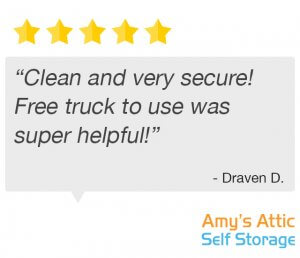Best Practices for Storing Shoes
Do you or your family members have too many shoes? Well, you are not alone. We prepared this article on best practices for storing shoes and boots to help your home be more organized and functional. Indeed, shoe-shopping is no longer a favorite pastime only reserved for fashion-conscious sports stars and Beverly Hills bachelorettes with purse Chihuahuas. Nowadays, many Texans find themselves with a shoe for every season and every occasion — in fact, around 2.4 billion pairs of shoes are sold in America every year.
According to TIME magazine, “Nearly two-thirds (63%) of men own 10 pairs of shoes or less with the average being 12 pairs. A large majority (82%) of women on the other hand, own 11 pairs of shoes or more with the average being 27 pairs.” Approximately, 29 million people live in Texas so there are hundreds of millions of shoes that need to be stored in Texas. With numbers like that, knowing the best tips for storing shoes is paramount to ensuring that when you need the perfect shoe for a situation, it’ll always be available and in good condition.
Tip 1: Organize!
While it may be tempting to simply file your shoes away in random order on a shelf, shoe rack, or simply laying where you kicked them off the night previous, this method poses several risks. A disorganized shoe collection increases your chances of losing shoes right when you need them, or increases the time it may take you to get ready. Organizing shoes doesn’t need to be an exact science, however. The simplest list of categories, and where they’re best placed, can be found below:
Boots
This category includes snow shoes, rain boots, leather boots, and other such high-ankle shoe. This style of shoe can be placed just about anywhere, often being more durable than other categories, and fits best either placed on the floor or on lower shelves with enough height to fit them. For softer-material boots, it’s best to fit a sleeve or crumpled paper inside the shoe, to keep it upright and avoid folding at the ankle, as over time this will wear the material and lead to damage.
When it comes to cowboy boots, however, they are far more multi-purpose. According to Encyclopedia.com, “Cowboy boots have also led a long double life as fashion accessories[…] Most cowboy boots that are manufactured now are not sold to people who will ever wear them on a horse.” Such boots worn for this purpose are best stored in a similar fashion to dress shoes, as described below.
Sandals
This includes flip-flops, sandals, flats, and other such simple slip-ons. These shoes can be stored in hanging containers, bins, cubbies, or hanging door storage, as most are less prone to damage and take up a minimal amount of space.
Sneakers
This includes exercise and sports shoes. These shoes are often more durable and easier to store, and when packing them for long-term storage, are less likely to suffer damage if placed lengthways and more tightly together in the same container. It’s best to avoid placing them on the floor, instead storing them either in marked boxes on a shelf, or in a hanging storage container for easy access.
Dress Shoes
Likely being the most expensive in a given collection, it’s best to store dress shoes in the very top shelves, preferably in marked containers, to avoid damage or loss. For women’s heels, it’s best to keep them upright and more spread out, as they are more delicate and prone to scratches and nicks.
Tip 2: Know your materials
Many different shoe materials require special care, to maximize quality and longevity. The best methods for caring for each material is listed below.
Leather & Suede
In Texas, cowboy boots rule a sizeable portion of the leather shoe market, and can be seen in both casual and professional spaces. Leather is a common material in dress shoes, heels, and other boots as well. Comfortable, durable, and timelessly stylish, many leather shoes, if treated well, can last for years.
First and foremost, it’s important to distinguish between genuine leather, synthetic leather, and suede. Genuine leather will often come with a guarantee from the maker, whether marked on the shoe itself, a tag, or the box, will come with subtle wrinkles and imperfections, and if a little water is dripped onto it, it will be absorbed. Synthetic leather does not absorb moisture, does not often come with that authentic “leathery” smell, and often lacks these surface imperfections.
Suede, meanwhile, is a supple, thin kind of leather often used for dress shoes. It’s important to recognize that suede is very different from velvet, which is a type of woven fabric. It’s often easy to tell the difference between suede and velvet by looking for the woven thread pattern beneath the tufted surface of the velvet, which suede lacks.
Synthetic leather does not require any treatment beyond basic cleaning with mild soap. Genuine leather and suede requires a little more effort and special soap. Usually, saddle soap and a damp rag is all that’s required to clean surface dirt, followed by a leather conditioner, applied by brush or soft cloth, to ensure the leather is kept strong and healthy. The shoes can then be buffed to a satisfactory polish and allowed to air dry.
Neglected, dry leather will crack and warp eventually, and no amount of conditioning can heal cracked leather. Avoid keeping leather near any sources of heat, as this can also dry and warp the leather.
Fabrics
Canvas sneakers are popular among young people, and luckily don’t require as much strict maintenance as leather or more expensive materials. Using a mild soap, baking soda mix, or equivalent cleaner, this material can be spot-cleaned with a bristle brush, or even thrown into a washer on a gentle cycle with half the normal amount of detergent and allowed to air dry.
Synthetics
Synthetic materials such as synthetic leather, polyester, rubber and meshes can be cleaned in a similar way to fabric shoes, except for putting them in the washing machine. Exercise shoes can contain foam which should not be allowed to get overly wet, as this weakens the material. Be sure to carefully survey each shoe, to make sure you’re not wetting any foam materials found in the tongue and inner sole of the shoe.
Cork
Some women’s wedges can include cork in the heel. While a relatively durable material, to avoid damage, use a diluted vinegar solution: ½ cup of white vinegar per gallon of warm water. Apply this solution to the shoe and carefully scrub the cork section, being sure to change angles every so often, as the material is porous and can hide grime well.
Tip 3: Picking the right storage
Depending on the season, it may not be feasible to store every shoe a family owns in their closet at home. Amy’s Attic Self Storage offers a range of storage solutions for a range of needs and budgets, and offers accompanying containers, perfect for keeping one’s shoes in mint condition.
Climate Control
Maintaining an appropriate temperature and moisture is crucial for many shoe materials, as they can grow moldy or dry if not stored properly. Consider climate-controlled storage to prevent damage over the course of cold winters or hot summers, both of which Texas has in spades.
Organization
Amy’s Attic Self Storage offers additional supplies and containers for purchase in convenient bundles for a range of needs. It is highly recommended to organize shoes by season, category, or individually, for ease of access at any time.
Safety
Over time, shoe collections can grow and include many sought-after brands and materials. Amy’s Attic Self Storage facilities are well-lit, clean, and attended to by friendly staff. Their state-of-the-art security will protect your collection and ensure you always have access to the perfect shoe.
“Best Practices for Storing Shoes” Article Sources:
• “TIME Style and Design Poll.” Time, Time Inc., 5 Mar. 2006, content.time.com/time/arts/article/0,8599,1169863,00.html.
• “Cowboy Boots.” How Products Are Made, Encyclopedia.com, 2019, www.encyclopedia.com/sports-and-everyday-life/fashion-and-clothing/clothing-jewelry-and-personal-adornment/cowboy-boots.






